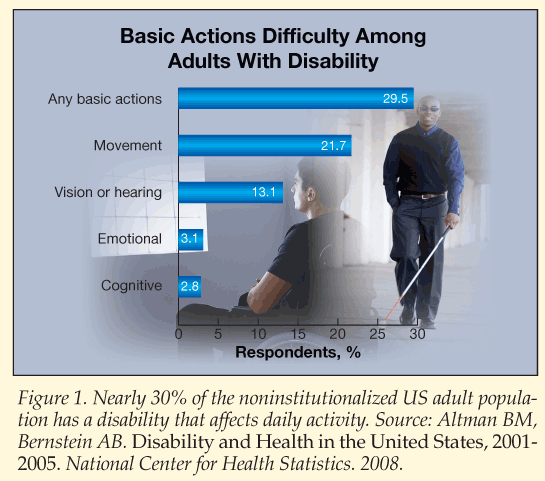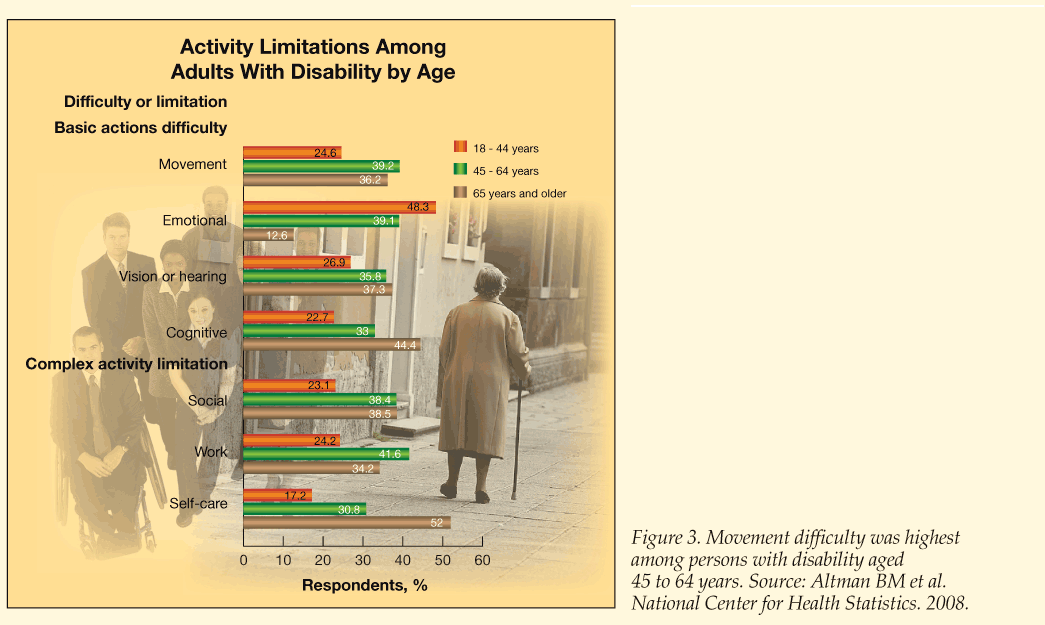- Clinical Technology
- Adult Immunization
- Hepatology
- Pediatric Immunization
- Screening
- Psychiatry
- Allergy
- Women's Health
- Cardiology
- Pediatrics
- Dermatology
- Endocrinology
- Pain Management
- Gastroenterology
- Infectious Disease
- Obesity Medicine
- Rheumatology
- Nephrology
- Neurology
- Pulmonology
Disability Affects 3 of 10 US Adults
An estimated 62 million noninstitutionalized US adults 18 years and older, or approximately 30% of the adult population, have a disability that affects daily activity (Figure 1). About two-thirds (67%) of persons with basic actions difficulty (defined as difficulty with basic movement or sensory, cognitive, or emotional difficulties) are younger than 65 years, according to the National Center for Health Statistics (NCHS), a CDC division.

An estimated 62 million noninstitutionalized US adults 18 years and older, or approximately 30% of the adult population, have a disability that affects daily activity (Figure 1). About two-thirds (67%) of persons with basic actions difficulty (defined as difficulty with basic movement or sensory, cognitive, or emotional difficulties) are younger than 65 years, according to the National Center for Health Statistics (NCHS), a CDC division.
To examine health-related differences between adults with disability and those without disability, Barbara M. Altman, PhD, disability statistics consultant and former NCHS special assistant for disability statistics, and Amy B. Bernstein, ScD, chief of the Analytic Studies Branch of the Office of Analysis and Epidemiology at the NCHS, and colleagues reviewed data from the National Health Interview Survey, which canvassed 157,796 adults. Findings of the report, Disability and Health in the United States, 2001-2005, showed that 14.3% of respondents self-reported difficulties with complex daily activities, of which work limitations (11.6%) posed the biggest problem (Figure 2).

Difficulty with basic movement was most prevalent among respondents aged 45 to 64 years (39.2%) (Figure 3). About half (48.3%) of respondents with emotional difficulties were younger than 45 years. Almost identical percentages of respondents aged 45 to 64 years (38.4%) and 65 years and older (38.5%) reported social activity limitations.
Approximately one-third (32.9%) of adults with basic actions disability or complex activity limitations were less likely to be of healthy weight than adults without disability (42.8%).

